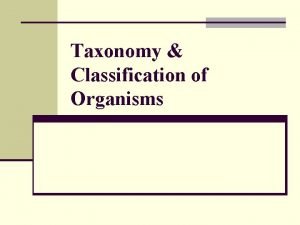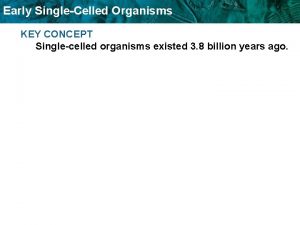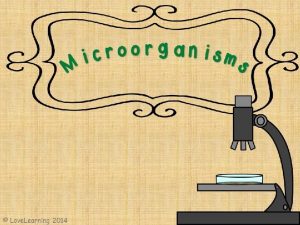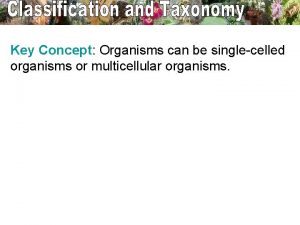12 4 Early SingleCelled Organisms How did singlecelled







- Slides: 7

12. 4 Early Single-Celled Organisms How did single-celled organisms arise on Earth?

12. 4 Early Single-Celled Organisms KEY CONCEPT Single-celled organisms existed 3. 8 billion years ago.

12. 4 Early Single-Celled Organisms Microbes have changed the physical and chemical composition of Earth. • The oldest known fossils are a group of marine cyanobacteria. – prokaryotic cells (no nucleus) – added oxygen to atmosphere – deposited minerals

12. 4 Early Single-Celled Organisms • Some cyanobacterial lived in colonies and formed stromatolites (domed, rock structures made of layers of cyanobacteria and sediment). • Fossil stromatolites provide evidence of early colonies of life 3. 5 BYA

12. 4 Early Single-Celled Organisms • The addition of oxygen into the atmosphere by photosynthesizing bacteria made it possible for oxygen using organisms to evolve.

12. 4 Early Single-Celled Organisms Eukaryotic (multicellular) cells may have evolved through endosymbiosis. (symbiosis- 2 organisms that depend on each other for mutual benefit) • Endosymbiosis is a relationship in which one organism lives within the body of another. • Mitochondria and chloroplasts (energy production organs within cells) may have developed through endosymbiosis between early cells and bacteria.

12. 4 Early Single-Celled Organisms The evolution of sexual reproduction led to increased diversity. • Early cells reproduces through asexual reproduction. Asexual Reproduction Sexual Reproduction 1 cell splits into two Two parents donate genes Fast, produces many offspring Requires time and energy Produces exact copies of parent cells Genetic variation in offspring, leading to adaptation and evolution • Sexual reproduction may have led to the evolution of multicellular life.













